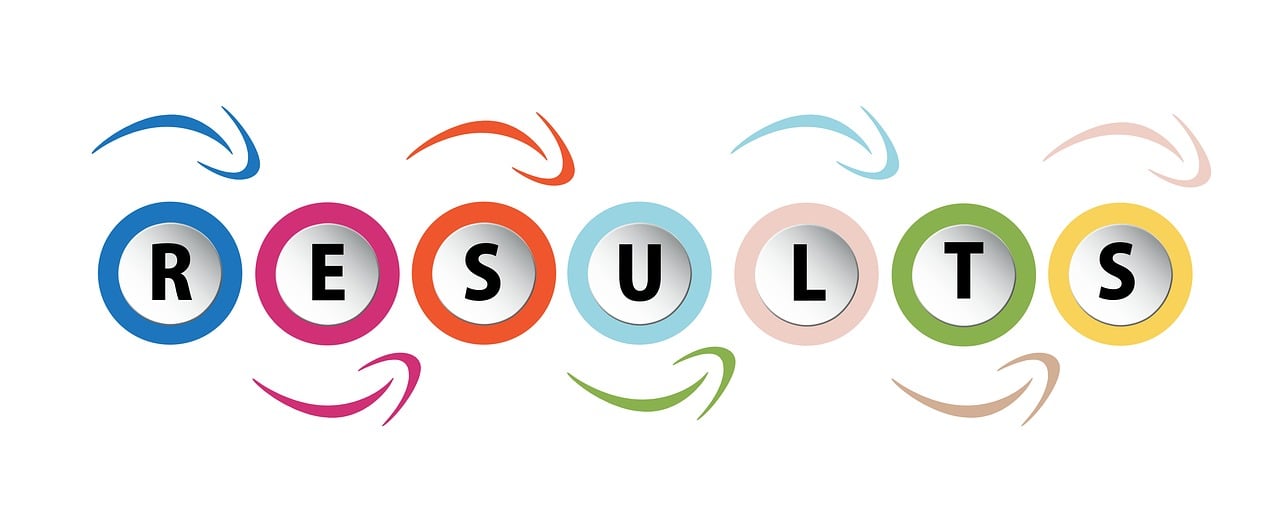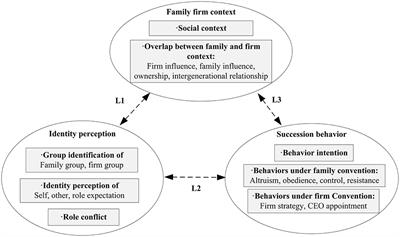Introduction
American family life has undergone profound transformations in recent decades, challenging traditional notions of what constitutes a “typical” family. As societal norms, economic dynamics, and cultural attitudes evolve, so do the dynamics of family structures and values. This article explores the shifting landscape of American family life, highlighting the factors contributing to these changes and their implications for individuals and society.
The fabric of American family life has indeed experienced a remarkable evolution over the past few decades, ushering in a new era that challenges conventional ideas about what constitutes a “typical” family. As the United States has journeyed through shifting societal norms, economic dynamics, and evolving cultural attitudes, the very essence of family structures and values has transformed in profound ways. This article endeavors to peel back the layers of this intricate transformation, shedding light on the key factors that have ushered in these changes and the broader implications they hold for individuals and society as a whole.
One of the most significant drivers of change in American family life is the shifting landscape of gender roles and relationships. The traditional gender roles that once defined family structures have given way to a more equitable sharing of responsibilities within households. Women have increasingly entered the workforce, and men have taken on more active roles in childcare and household duties. This shift has not only challenged traditional family dynamics but has also allowed families to adapt to the demands of the modern world.
Additionally, the concept of family itself has become more inclusive. The traditional nuclear family, composed of a heterosexual couple and their biological children, is no longer the sole model. Today, families come in diverse forms, including single-parent households, blended families, same-sex couples with children, and extended families living under one roof. These changes reflect a more inclusive and accepting society that recognizes the validity and value of all family structures.
Economic forces have also played a pivotal role in reshaping family life. The rising cost of living, increasing student debt, and the pursuit of individual career goals have delayed marriage and parenthood for many. This has led to a postponement of major life events, such as marriage and starting a family, until individuals are more financially stable. These shifts in timing have ripple effects on family structures and the support systems available to individuals.
Moreover, the digital age has ushered in new dynamics in family life. The omnipresence of technology has reshaped communication patterns, sometimes bridging geographical distances within families but also posing challenges in terms of screen time, online safety, and maintaining meaningful face-to-face connections.
The implications of these changes are multifaceted. On one hand, they empower individuals to make choices that align with their aspirations and values. Families are more adaptable and resilient than ever before, capable of navigating challenges and celebrating their unique dynamics. On the other hand, these transformations raise questions about the support systems available to families and individuals, from affordable childcare and parental leave policies to access to quality education and healthcare.
In essence, the shifting landscape of American family life is a reflection of the broader evolution of society itself. It signifies a more inclusive, adaptable, and resilient approach to the concept of family. While these changes bring both opportunities and challenges, they ultimately underline the importance of fostering a society that supports individuals and families in all their diverse forms and choices, ensuring that the evolving landscape of family life continues to be a source of strength and unity in the United States.
For additional details, consider exploring the related content available here The American family today | Pew Research Center
The once conventional nuclear family—consisting of two parents and their biological children—is no longer the dominant model. Today, American families take on various forms, including single-parent households, blended families, same-sex couples raising children, and multi-generational households. This diversity reflects the changing demographics and acceptance of non-traditional family structures.
The evolution of family structures in the United States is a testament to the dynamic nature of society. While the conventional nuclear family of the mid-20th century was once the norm, the 21st century has ushered in a rich tapestry of family configurations, each with its unique strengths and challenges.
Single-parent households, for instance, have become increasingly common. They are often headed by individuals who, despite facing the formidable task of raising children alone, exhibit remarkable resilience and dedication. These families showcase the strength of an individual’s love and commitment in providing a nurturing environment for their children.
Blended families, where parents with children from previous relationships come together to form a new family unit, offer their own set of complexities and joys. The merging of distinct backgrounds and experiences requires adaptability and open communication, yet it also presents an opportunity for children to learn about diversity and flexibility within familial bonds.
The acceptance of same-sex couples as parents has been a milestone in the ongoing journey toward equality and inclusivity. These families exemplify that love, care, and support transcend gender and sexual orientation. Their presence challenges traditional notions of parenthood and reinforces the idea that what truly matters is the well-being of the children.
Multi-generational households are another fascinating aspect of this evolving landscape. Here, grandparents, parents, and children often live together under one roof, pooling resources and sharing responsibilities. This arrangement not only fosters strong intergenerational bonds but also addresses practical concerns such as childcare and financial stability.
The diversity of family structures we see today reflects shifting demographics and a growing acceptance of non-traditional arrangements. It underscores society’s recognition that the essence of family is not limited to a particular form but is rooted in love, care, and mutual support. These evolving family dynamics challenge outdated stereotypes and celebrate the resilience and adaptability of American families.
Moreover, this transformation in family structures has profound implications for policies, businesses, and social institutions. It calls for a more inclusive approach to support families of all compositions, from offering flexible work arrangements to recognizing the legal rights of non-biological parents. It also encourages a broader understanding of family within communities, schools, and healthcare systems.
In conclusion, the shifting landscape of American families reflects the rich tapestry of human relationships and the changing norms of our society. These diverse family structures are a testament to our capacity for adaptation and love. Embracing this diversity and ensuring that policies and institutions support the well-being of all families is a vital step toward building a more inclusive and compassionate society for generations to come.
To delve further into this matter, we encourage you to check out the additional resources provided here: Hispanic Families in the United States: Family Structure and Process …

Young adults are increasingly delaying marriage and parenthood to pursue education, career opportunities, and personal growth. As a result, the concept of “family” now encompasses more than just parents and children. Extended periods of cohabitation and non-traditional family units have become commonplace.
The shifting landscape of young adulthood is transforming our perception of family and reshaping the traditional timeline of life events. Today, more than ever, young adults are delaying the commitments of marriage and parenthood in pursuit of higher education, career advancement, and personal fulfillment.
Education plays a pivotal role in this transformation. With the increasing emphasis on acquiring specialized skills and knowledge, many young adults prioritize their educational journeys before settling into family life. This dedication to learning not only enriches their personal growth but also equips them with the tools needed to excel in a rapidly changing job market.
Career opportunities, too, have a profound influence on the decisions of young adults. The desire to establish a stable foundation and achieve career goals often takes precedence over starting a family. Many individuals are committed to building a strong professional identity and achieving financial stability before embarking on the journey of parenthood.
Personal growth, both in terms of self-discovery and the pursuit of passions, is another driving force behind this shift. Young adults are exploring their identities, traveling, and engaging in experiences that broaden their horizons. These experiences contribute to their personal development and fulfillment, further delaying the traditional milestones of marriage and parenthood.
As a consequence of these choices, the concept of “family” has expanded and evolved. Extended periods of cohabitation are now common as couples test the waters of commitment before formalizing their relationships through marriage. Non-traditional family units, such as single-parent households, same-sex couples, and chosen families formed through deep friendships, are increasingly celebrated and accepted in society.
This transformation challenges the notion that there is a one-size-fits-all path to adulthood and family life. Instead, it emphasizes the importance of individual agency and choice in defining one’s life journey. It also encourages a more inclusive understanding of family, one that recognizes the diverse ways in which people find love, connection, and support in their lives.
In conclusion, the trend of delaying marriage and parenthood among young adults reflects a broader societal shift towards valuing education, career, and personal growth. This evolution in life choices is expanding the definition of family and encouraging a more inclusive and flexible approach to building meaningful relationships and connections in our ever-changing world.
Should you desire more in-depth information, it’s available for your perusal on this page: The Evolution of American Family Structure | CSP Global

Single-parent households, often led by single mothers, are a growing demographic. These families face unique challenges but also demonstrate resilience and adaptability in raising children and maintaining strong family bonds.
Single-parent households, a demographic that is steadily growing, particularly led by single mothers, represent a significant segment of our society. These families encounter distinctive challenges, but their stories
Don’t stop here; you can continue your exploration by following this link for more details: The Evolution of American Family Structure | CSP Global

The recognition of same-sex marriage and parenting rights has contributed to greater visibility and acceptance of LGBTQ+ families. These families are increasingly becoming an integral part of the American family landscape.
The recognition of same-sex marriage and parenting rights has indeed marked a significant milestone in the ongoing journey towards greater LGBTQ+ acceptance and inclusivity in American society. This transformation extends far beyond legal rights and has profound implications for the evolving landscape of American families:
Legal Equality and Protection: The legalization of same-sex marriage in the United States through the landmark Supreme Court decision in Obergefell v. Hodges in 2015 not only granted LGBTQ+ couples the legal right to marry but also afforded them the same legal protections and benefits that heterosexual couples enjoy. This recognition has provided LGBTQ+ families with the security and legal safeguards they deserve.
Parenting Rights: In parallel with marriage equality, LGBTQ+ parenting rights have expanded. Same-sex couples now have the opportunity to become parents through various means, including adoption, surrogacy, and co-parenting. This has enabled LGBTQ+ individuals and couples to build loving families and fulfill their dreams of parenthood.
Greater Visibility: As same-sex couples openly raise children and build families, the visibility of LGBTQ+ families has grown exponentially. This visibility serves to challenge stereotypes and misconceptions, fostering a more informed and accepting society.
Educational and Advocacy Efforts: Numerous LGBTQ+ advocacy organizations and allies have worked tirelessly to promote acceptance and understanding of LGBTQ+ families. Educational initiatives, support networks, and resources have empowered LGBTQ+ parents to navigate the challenges they may encounter while raising children.
Diverse Family Structures: LGBTQ+ families have diverse family structures. Some may consist of two fathers, two mothers, or non-binary parents. These diverse family units contribute to a broader understanding of what it means to be a family, emphasizing the importance of love and support over traditional gender roles or configurations.
Inclusivity in Educational Curricula: Efforts to create inclusive educational curricula that recognize and respect diverse family structures, including LGBTQ+ families, have gained momentum. This inclusion not only benefits LGBTQ+ students by providing representation but also fosters understanding and empathy among all students.
Championing Equality: The fight for LGBTQ+ rights, including those related to family and parenting, continues. Advocacy efforts focus on addressing discriminatory practices, ensuring equal access to fertility treatments, and safeguarding the rights of LGBTQ+ parents in child custody cases.
Impact on Future Generations: The acceptance of LGBTQ+ families is having a positive impact on future generations. Children growing up in these families tend to be more open-minded and accepting of diversity, contributing to a more inclusive and compassionate society.
In conclusion, the recognition of same-sex marriage and parenting rights is a transformative moment in American family life. LGBTQ+ families are forging a path towards greater visibility, acceptance, and inclusivity, challenging traditional norms and contributing to the rich tapestry of American families. As society continues to evolve, the love and commitment shared by LGBTQ+ parents and their children are shaping a future where family is defined by love and support, irrespective of gender or sexual orientation.
Additionally, you can find further information on this topic by visiting this page: Family Relationships and Well-Being – PMC

The pursuit of a healthy work-life balance is a significant consideration for modern families. As both parents often work outside the home, there is a growing emphasis on flexible work arrangements, parental leave policies, and shared caregiving responsibilities.
The pursuit of a healthy work-life balance is not only a significant consideration for modern families but also a vital component of individual well-being and societal progress. In an era where both parents in many households often work outside the home, the need for a balanced approach to work and life has become increasingly apparent. Here are some key points to consider in this context:
Flexible Work Arrangements: The traditional 9-to-5 work model is evolving to accommodate the changing dynamics of modern families. Flexible work arrangements, such as remote work, compressed workweeks, or flexible hours, empower individuals to better manage their work commitments while also fulfilling family responsibilities. This flexibility not only reduces the stress of juggling work and family life but also increases job satisfaction and productivity.
Parental Leave Policies: Recognizing the importance of bonding with newborns and providing essential care, many countries and employers have introduced more generous parental leave policies. These policies allow parents, regardless of gender, to take time off work to care for their children without jeopardizing their careers. Accessible parental leave is not just beneficial for families but also contributes to gender equality in the workplace.
Shared Caregiving Responsibilities: The concept of caregiving is expanding beyond traditional gender roles. Modern families are increasingly embracing shared caregiving responsibilities, where both parents actively participate in raising and nurturing their children. This not only strengthens family bonds but also sets positive examples for the next generation about gender equality and cooperation.
Quality Time and Well-being: The pursuit of a healthy work-life balance goes beyond mere time management. It emphasizes the importance of quality time spent with family and oneself. Engaging in meaningful activities, hobbies, and self-care routines fosters physical and mental well-being, reducing stress and burnout.
Supportive Communities: Communities and support networks play a crucial role in helping families achieve a healthy work-life balance. Access to affordable childcare services, educational resources, and social support systems can alleviate some of the pressures faced by working parents. Moreover, community initiatives that promote work-life balance, such as family-friendly events and flexible community services, contribute to a more inclusive and supportive environment.
Long-term Benefits: Prioritizing work-life balance not only benefits individuals and families but also has long-term societal advantages. Employees who can balance their professional and personal lives tend to be more engaged, productive, and loyal to their employers. Additionally, societies that promote a healthy work-life balance often report higher levels of happiness, better mental health outcomes, and a stronger sense of social cohesion.
In conclusion, the pursuit of a healthy work-life balance is an essential consideration in modern society. It not only supports the well-being of individuals and families but also contributes to a more equitable and sustainable workforce. By fostering flexible work arrangements, implementing supportive parental leave policies, encouraging shared caregiving responsibilities, and promoting quality time and well-being, we can create a more balanced and fulfilling life for everyone in our communities.
To delve further into this matter, we encourage you to check out the additional resources provided here: The American family today | Pew Research Center

Traditional gender roles within families are evolving. There is a greater emphasis on equality in household and parenting responsibilities, with many couples sharing chores, childcare duties, and financial responsibilities more equitably.
Traditional gender roles within families are evolving. There is a greater emphasis on equality in household and parenting responsibilities, with many couples sharing chores, childcare duties, and financial responsibilities more equitably. This shift not only reflects a more inclusive and fairer society but also brings about numerous benefits for individuals and families.
Firstly, as gender roles become more fluid, it opens up new opportunities for personal and professional growth. Men and women are increasingly free to pursue careers and interests that align with their passions and talents, unburdened by rigid stereotypes. This not only promotes individual happiness but also enriches society with diverse perspectives and skills.
Furthermore, sharing household and parenting responsibilities fosters stronger partnerships and healthier family dynamics. Couples who divide responsibilities based on individual strengths and interests often report higher relationship satisfaction. Moreover, children raised in such environments are exposed to a broader range of caregiving styles and gender role models, which can contribute to their own development and attitudes towards gender.
From an economic standpoint, a more equitable distribution of responsibilities can mitigate the career setbacks that disproportionately affect women due to caregiving responsibilities. This can lead to greater financial security for families and reduce the gender pay gap over time.
In essence, the evolving landscape of gender roles within families reflects a progressive society that values fairness, diversity, and individual autonomy. By breaking free from outdated stereotypes, families and individuals can thrive in a world that celebrates the full spectrum of human potential and contributions.
For a comprehensive look at this subject, we invite you to read more on this dedicated page: Family Patterns of Gender Role Attitudes – PMC

Technology has reshaped family life, impacting communication, entertainment, and education. Parents are faced with new challenges, such as screen time management and navigating the digital landscape, as they raise tech-savvy children.
Technology’s pervasive influence has undeniably transformed the dynamics of family life, ushering in both remarkable opportunities and unique challenges. As our world becomes increasingly digital, parents find themselves navigating uncharted territory, adapting to this new technological era while striving to provide their children with a balanced and enriching upbringing.
Communication within families has evolved significantly in the age of technology. While devices and apps have made it easier for family members to stay connected, it has also introduced the paradox of being “connected but distant.” Parents and children often find themselves absorbed in their screens, even when in the same physical space. Balancing meaningful face-to-face interactions with the digital allure has become a common struggle.
Entertainment, too, has undergone a seismic shift. Families have access to an abundance of content at their fingertips, which can be both a blessing and a challenge. Parents must navigate the vast landscape of online content to ensure it aligns with their values and is age-appropriate for their children. Additionally, the allure of screen-based entertainment can compete with physical activities and outdoor play, prompting concerns about sedentary lifestyles.
Education, on the other hand, has seen remarkable innovation. Technology has expanded access to educational resources, enabling children to explore a world of knowledge online. Virtual classrooms, educational apps, and interactive learning tools have become integral to modern education. However, parents must play an active role in guiding their children’s digital learning experiences, ensuring that they are both educational and safe.
One of the central challenges parents face in this tech-driven age is managing screen time. Striking the right balance between the benefits and potential harms of technology can be a daunting task. Parents often grapple with setting appropriate screen time limits, monitoring content, and cultivating healthy tech habits for the entire family.
Moreover, cybersecurity and online safety have become paramount concerns. Parents must educate themselves and their children about the potential risks of the digital world, from cyberbullying to online predators. Establishing open lines of communication about online experiences and ensuring that children understand responsible online behavior are crucial aspects of modern parenting.
Despite these challenges, technology also offers valuable tools for parents. It can facilitate communication with distant family members, provide educational support, and offer enriching digital experiences that foster creativity and problem-solving skills.
In navigating this digital landscape, parents are not only raising tech-savvy children but also helping them develop crucial digital literacy skills. These skills empower children to make informed decisions about their online interactions, distinguish between reliable and unreliable information, and harness technology as a tool for personal and academic growth.
In conclusion, the transformative impact of technology on family life presents a complex and ever-evolving set of challenges and opportunities. Parents, as the guides and role models for their children, must adapt to this digital age while instilling values of responsible and mindful tech use, ultimately striving to create a balanced and nurturing environment for their families in a tech-infused world.
For a comprehensive look at this subject, we invite you to read more on this dedicated page: The Evolution of American Family Structure | CSP Global

Education remains a top priority for American families, with an increased focus on providing children with a well-rounded education that includes extracurricular activities and diverse experiences.
Education remains a top priority for American families, and in recent years, there has been a growing emphasis on providing children with a well-rounded education that extends beyond the classroom. This shift recognizes that education is not just about acquiring knowledge but also about fostering holistic development and preparing students for the complexities of the modern world.
A well-rounded education encompasses a broad spectrum of experiences. It’s not confined to textbooks and lectures but extends to extracurricular activities, hands-on learning, and exposure to diverse perspectives. American families are increasingly realizing that these experiences are invaluable in shaping well-rounded individuals who are not only academically proficient but also socially and emotionally intelligent.
Extracurricular activities, such as sports, arts, and clubs, play a pivotal role in this educational approach. They offer students opportunities to explore their interests, develop teamwork and leadership skills, and build a sense of identity and belonging. Whether it’s participating in a school band, joining a debate club, or competing in sports, these activities contribute to a more holistic education by nurturing talents and fostering personal growth.
Diversity is another crucial element of a well-rounded education. Exposure to different cultures, perspectives, and backgrounds cultivates empathy, cultural competency, and a broader worldview. American families increasingly seek out schools and programs that prioritize diversity and inclusion, recognizing that such experiences not only prepare students for a diverse workforce but also contribute to a more harmonious society.
Furthermore, a well-rounded education promotes critical thinking and problem-solving skills. It encourages students to question, analyze, and evaluate information independently. This skill set is essential in a world where information is readily accessible, and the ability to discern credible sources and think critically is paramount.
The changing landscape of education reflects an evolving understanding of what it means to be well-prepared for the future. While traditional academic excellence remains important, the integration of extracurricular activities, diverse experiences, and a focus on holistic development is equipping students with the skills and competencies needed to thrive in an ever-changing world.
In conclusion, the renewed emphasis on providing children with a well-rounded education signifies a commitment to preparing them not just for the workforce but for life as informed, empathetic, and adaptable individuals. It recognizes that education is a multifaceted journey that extends beyond textbooks and classrooms, enriching the lives of students and contributing to a brighter, more dynamic future.
Should you desire more in-depth information, it’s available for your perusal on this page: The American family today | Pew Research Center

Multi-generational households are fostering stronger bonds among family members of different ages. This dynamic not only provides emotional support but also allows for the sharing of caregiving responsibilities and financial resources.
The resurgence of multi-generational households is reshaping the way families interact, creating a tapestry of interconnectedness that benefits everyone involved. This trend not only enhances emotional bonds but also carries practical advantages, such as sharing caregiving responsibilities and financial resources, leading to a more holistic family experience.
Emotional Resilience and Support: Multi-generational households offer a unique opportunity for family members to connect on a deeper emotional level. Grandparents, parents, and children living under one roof provide a support system that fosters understanding, empathy, and a sense of belonging. This emotional resilience can be a source of comfort during challenging times, promoting mental well-being and reducing feelings of isolation.
Shared Caregiving Responsibilities: One of the most significant benefits of multi-generational living is the distribution of caregiving responsibilities. In such households, caregiving can be a collective effort. Grandparents often play a pivotal role in helping raise and nurture grandchildren, easing the burden on parents. This arrangement not only strengthens the family bond but also allows parents to maintain a better work-life balance.
Financial Stability: The pooling of financial resources is another advantage of multi-generational living. Shared expenses for housing, utilities, and groceries can lead to substantial savings for all family members. This financial stability can alleviate economic pressures and create opportunities for investments in education, homeownership, or retirement planning.
Transfer of Knowledge and Wisdom: Multi-generational households provide a fertile environment for the transfer of knowledge and wisdom across generations. Grandparents can share life experiences, cultural traditions, and practical skills with their grandchildren. This intergenerational exchange enriches family dynamics and helps younger generations learn from the wisdom of their elders.
Cultural and Diversity Benefits: In diverse multi-generational households, different generations often bring unique cultural backgrounds and perspectives. This cultural diversity enriches family life, exposing everyone to a broader worldview and fostering tolerance and appreciation for different cultures and traditions.
Flexible Living Arrangements: Multi-generational living offers flexibility in housing arrangements. Families can adapt their homes to accommodate changing needs, such as creating private living spaces for older family members or communal areas for shared activities. This adaptability ensures that the living situation remains comfortable and functional for everyone.
While multi-generational living has its advantages, it’s essential to acknowledge that it also comes with its own set of challenges, such as privacy concerns and differing expectations. Successful multi-generational households often prioritize open communication, boundaries, and shared responsibilities to ensure harmony and a fulfilling family experience.
In sum, multi-generational households are a testament to the enduring importance of family bonds. They provide emotional support, share caregiving duties, and enhance financial stability, fostering an environment where family members of different ages can thrive, learn, and grow together. As this trend continues to shape family dynamics, it reaffirms the notion that family is not just a unit of individuals but a tapestry woven together by love, care, and shared experiences.
To delve further into this matter, we encourage you to check out the additional resources provided here: Family Relationships and Well-Being – PMC

While the changing dynamics of American family life bring about opportunities for greater inclusivity and flexibility, they also present challenges. Balancing work and family, addressing economic disparities, and ensuring access to quality education and healthcare are ongoing concerns. Additionally, navigating the complexities of non-traditional family structures may require legal and social adjustments.
The evolving dynamics of American family life reflect a society that is becoming more diverse and adaptable. This shift offers opportunities for greater inclusivity and flexibility, enriching the tapestry of our communities. However, it also presents a series of challenges that demand our attention and concerted efforts.
Balancing work and family has long been a concern, but it remains a pressing issue as more families juggle multiple responsibilities. In a society where both parents often work, finding adequate childcare, managing schedules, and ensuring a healthy work-life balance are daily struggles. Addressing these challenges requires not only workplace policies that support family needs, such as parental leave and flexible work arrangements but also a cultural shift that values and respects family time.
Economic disparities within families are another significant concern. While some families thrive, many face financial instability or struggle to make ends meet. Income inequality can lead to unequal access to educational opportunities, healthcare, and other vital resources. To address this issue, policies aimed at reducing income inequality and providing a safety net for vulnerable families are essential. Additionally, efforts to improve financial literacy and promote economic mobility can empower families to build a more secure future.
Access to quality education and healthcare remains a critical concern for American families. Ensuring that all children receive a quality education, regardless of their socioeconomic background, is essential for leveling the playing field and fostering future success. Affordable and accessible healthcare is equally important, as the well-being of families hinges on their ability to access medical services without undue financial strain. Ongoing efforts are needed to improve educational standards, increase school choice, and make healthcare more affordable for all.
Non-traditional family structures, such as single-parent families, blended families, and LGBTQ+ families, are becoming increasingly common. While these diverse family arrangements enrich our society, they also require legal and social adjustments to ensure that all families enjoy equal rights and protections. Legal recognition of various family forms, non-discrimination policies, and inclusive social support systems are vital steps towards ensuring the well-being of these families and their children.
In conclusion, the changing dynamics of American family life bring both opportunities and challenges. Embracing inclusivity and flexibility can lead to a more vibrant and resilient society. However, it is imperative that we address the pressing issues of work-life balance, economic disparities, access to education and healthcare, and legal and social adjustments to create an environment where all families can thrive. By doing so, we can truly celebrate and support the diverse tapestry of American families in the 21st century.
To delve further into this matter, we encourage you to check out the additional resources provided here: Family Relationships and Well-Being – PMC

Conclusion
American family life is evolving, reflecting the diversity and adaptability of its people. These shifts in family dynamics and values are not a deviation from traditional family structures but rather an expansion and redefinition of what it means to be a family in the 21st century. Embracing this diversity and supporting policies that promote equality, work-life balance, and the well-being of all family members can contribute to stronger, more resilient families and communities. As American family life continues to change, it is essential to celebrate the values that unite us and embrace the evolving tapestry of family structures in the United States.
For a comprehensive look at this subject, we invite you to read more on this dedicated page: Family Relationships and Well-Being – PMC
More links
Looking for more insights? You’ll find them right here in our extended coverage: The Evolution of American Family Structure | CSP Global
